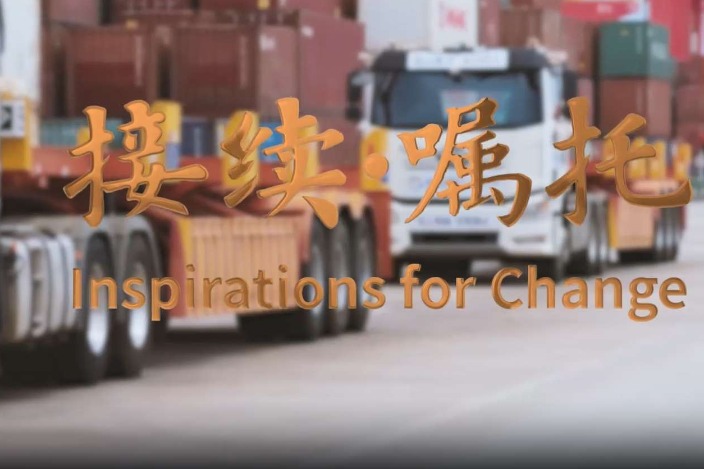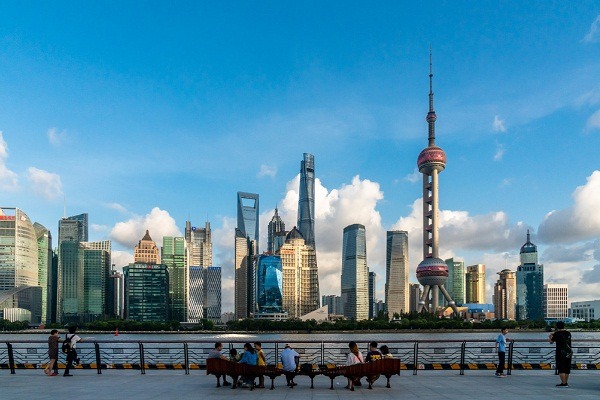Beijing's ties with CEE countries benefit the whole of Europe


SHI YU/CHINA DAILY
The European Union's perception of China has undergone a significant shift in recent years. It now sees China as a partner, competitor and systemic rival all at once. But despite the change in the EU's perception, there is still strong complementarity between the two economies, as they are closely intertwined in terms of trade and industry.
China's cooperation with Central and Eastern Europe has been gaining increasing significance within its broader engagement with the entire European continent.
First, compared with their Western European counterparts, CEE countries, especially Hungary and Serbia, have a more welcoming attitude toward foreign investors and investments. This openness is exemplified by Hungarian Prime Minister Viktor Orban's "Open to the East" policy and reindustrialization plan, which offer generous subsidies to foreign investors relocating their production units to Hungary and thus creating local jobs. In 2023, Hungary attracted a record €13 billion ($13.97 billion) in foreign direct investment, with China being the top investor. This approach prioritizes creating synergy, making CEE countries more attractive to Chinese investors.
Second, the cost of labor in the CEE countries is significantly lower than in Western Europe. On average, a worker in the CEE region earns one-third to half of what his or her counterpart in Western Europe makes. Apart from that, investors in some Western European countries face additional financial and redundancy costs, which can create problems when setting up and/or managing factories. In contrast, the CEE countries offer a less-costly and more flexible labor market, attracting Chinese companies looking to optimize their production costs.
Third, countries such as Hungary already have a strong industrial base, particularly in the automobile and battery sectors. Many well-known brands including BMW, Mercedes-Benz, Audi, Volkswagen, Nissan, Ford, Kia, Skoda, Toyota and Fiat have set up factories in Hungary. In fact, Audi has created four times more jobs in Hungary than in Germany — and on April 26, it announced an additional $320 million investment in its Hungarian plant to increase the production of electric engines.
Besides, key players in the supply chains such as Continental and Robert Bosch have significantly increased their investments in Hungary to keep pace with the latest developments in the auto industry. This existing industrial ecosystem makes the CEE countries an attractive destination for Chinese companies looking to expand their presence in Europe.
Although market entities in China and the EU have been engaging in cooperation despite the ideological differences between the two sides, industrial players in Western Europe have become a victim of the ideological disagreements. They have been hit hard by rising energy prices following the Russia-Ukraine conflict. In particular, the German economy experienced negative growth for two consecutive quarters in 2023.
Also, due to Washington's inflation-fighting legislation, price-sensitive industries and companies are shifting bases to the United States lured by US subsidies, leading to the closure of factories, leading to job losses, in Europe. And as more barriers and filters are built between Western European companies and Chinese enterprises, which have the most resilient and extensive supply chains, the costs for European companies are rising rapidly.
However, the shift of EU-China cooperation toward Central and Eastern Europe has not gone unnoticed by Western European countries. Raising concerns about the potential economic and political consequences of this growing partnership, some have claimed that increasing Chinese investment and influence in the region could undermine the EU's unity and its ability to maintain a coherent stance on China-related issues. Some have even claimed that the technology transfer and knowledge sharing associated with Chinese investments could, in the long run, lead to a loss of competitive advantage for Western European companies.
It is important, however, to realize the EU-China relationship is not a zero-sum game; it can bring benefits to the EU as a whole, in the shape of increased trade, more job creation and economic growth. By engaging with China, the CEE countries can help bridge the gap between the EU and China, fostering cooperation on a range of issues, from climate change to global governance.
The "de-risking" narrative now dominates the discourse in the EU. De-risking, a business term, means diversifying risks to achieve better economic performance. But what EU policymakers are doing in the name of de-risking is undermining the EU's economic performance and harming European society.
The intensification of high-level exchanges between China and the EU, therefore, is the right time to reassess the EU's real interests and explore cooperative actions that can help the two sides move beyond the de-risking narrative. By focusing on mutually beneficial cooperation and addressing common challenges, the EU and China can help build a more prosperous and stable future for people on both sides. This is because despite the ideological differences, the complementary aspects of China-EU relations remain robust.
As for the shifting of EU-China cooperation toward CEE countries, it has been influenced by several factors, including a more receptive attitude to foreign investment, lower cost of labor and an established industrial base. For years, the EU has struggled with its policy toward Central and Eastern Europe, with more talent and investment flowing from former Soviet republics to the West than vice versa. As we enter a new phase of China-EU relations, investments from China could help these countries catch up in terms of manufacturing, research and job creation.
With Western Europe-based industries facing the challenges posed by ideological tensions, rising energy costs and the lure of US incentives, the CEE countries are becoming increasingly attractive destinations for Chinese investors. These complexities underscore the multifaceted and dynamic nature of EU-China relations and the need to foster cooperation and mutual understanding by overcoming geopolitical obstacles.
Especially, the EU must balance its concerns over China's growing influence with the potential benefits of enhanced cooperation, while ensuring that the concerns of all EU member states are addressed. By reassessing the de-risking narrative and prioritizing mutually beneficial cooperation, the EU and China can build a more prosperous future for their peoples and the international community as a whole.
The author is the founder of Sinnvoll Think Tank and former policy advisor at the European Parliament.
Contact the editor at [email protected].
































